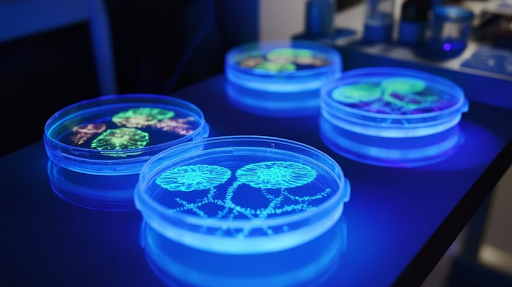The expression of recombinant proteins in Escherichia coli (E. coli) has become a cornerstone of biotechnology and pharmaceutical development. This process allows researchers to produce proteins for various applications, including therapeutic antibodies, enzymes, and vaccines. However, various environmental factors can significantly influence the efficiency and yield of recombinant protein expression. This blog will explore the key environmental variables that affect recombinant protein expression in E. coli.
1. Temperature
Temperature is one of the most critical factors influencing protein expression in E. coli. The growth temperature affects both the growth rate of the bacteria and the folding and stability of the expressed protein.
Optimal Temperature: Most E. coli strains thrive at 37°C. However, for proteins that require correct folding, lower temperatures (e.g., 16-25°C) can enhance the yield of soluble proteins by slowing down the growth rate and allowing more time for proper protein folding.
Stress Response: Elevated temperatures can lead to stress responses, forming inclusion bodies—aggregates of misfolded proteins that are difficult to recover and purify.
2. pH Levels
The pH of the growth medium can significantly impact protein solubility, stability, and overall expression levels.
Optimal pH Range: Most E. coli strains prefer a neutral pH range (around 7.0). Deviations can affect enzyme activity and protein solubility.
Buffering Systems: Employing suitable buffering agents in the growth medium can help maintain pH stability, facilitating consistent protein expression.
3. Nutrient Availability
The composition and concentration of nutrients in the growth medium play a vital role in E. coli growth and protein expression.
Carbon Sources: Different carbon sources (glucose, glycerol, etc.) can influence metabolic pathways and protein expression levels. For instance, glycerol can promote higher yields of recombinant proteins than glucose.
Nitrogen Sources: The type and concentration of nitrogen sources, such as ammonium salts or amino acids, can also affect growth rates and protein expression efficiency.
4. Induction Conditions
The timing and method of inducing protein expression are crucial for optimising yields.
Inducer Concentration: The concentration of inducers (like IPTG) used to trigger protein expression can affect the level of protein produced. Higher concentrations may lead to increased expression but can also strain the cellular machinery, leading to misfolding or aggregation.
Induction Time: The timing of induction after inoculation can influence protein yield. Allowing sufficient growth before induction often results in higher protein levels.
5. Oxygen Availability
Oxygen levels in the growth environment are essential for optimal E. coli metabolism and protein expression.
Aerobic vs. Anaerobic Conditions: Recombinant protein production typically requires aerobic conditions to enhance growth and productivity. However, specific proteins may be sensitive to oxygen, necessitating adjustments to oxygen levels.
Agitation and Aeration: Proper mixing and aeration can ensure adequate oxygen transfer, preventing stagnant conditions that hinder growth.
6. Strain Selection
Different E. coli strains exhibit varying capacities for protein expression based on their genetic makeup.
Expression Strains: Strains like BL21(DE3) are designed for high-level protein expression. Their genetic modifications, such as reduced protease activity, enhance the yield of soluble proteins.
Host Compatibility: Selecting a strain that is compatible with the target protein’s post-translational modifications is crucial for achieving the desired functionality.
7. Osmotic Pressure
Osmotic pressure can influence cell growth and protein expression in E. coli.
Salt Concentrations: High salt concentrations can cause stress to E. coli, impacting growth and protein yield. However, specific proteins may require salt for optimal stability and solubility.
Osmoprotectants: Compounds like trehalose can be added to the medium to help stabilise proteins under high osmotic pressure conditions.
Conclusion
Understanding the environmental factors affecting recombinant protein expression in E. coli is vital for optimizing production systems and improving yields. By carefully controlling temperature, pH, nutrient availability, induction conditions, oxygen levels, strain selection, and osmotic pressure, researchers can enhance the efficiency of recombinant protein production.
At Genext Genomics, we are committed to leveraging our expertise in recombinant protein expression to deliver high-quality proteins for research and therapeutic applications. By optimizing expression conditions and employing advanced techniques, we aim to contribute to the advancement of biotechnology and improve healthcare outcomes.



